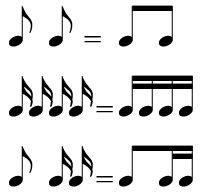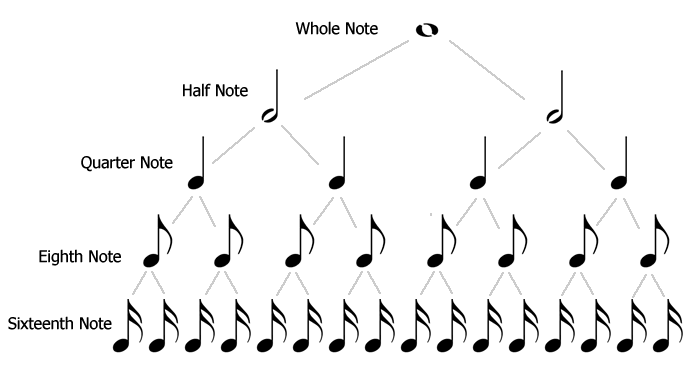First step to learning about rhythm and more specifically, how to read rhythm is to find the beat of any piece of music. The beat is the steady rhythm of music, just like your heartbeat. If you can match your heartbeat by tapping to it, you can match the beat of any piece of music.
However, this does take concentration and if you get distracted, you will likely lose the beat. Keep track of it - the beat is the most basic element of rhythm and you'll need it to organize everything rhythm-related around it.
Take Twinkle, Twinkle Little Star for example - can you tap the steady beat? Not the rhythm, but the ever persistent, never stopping beat. If you are familiar with a metronome, a metronome provides a steady, constant beat.
Rhythm is the organized pattern of sound. It's related to the beat in that we organize rhythm around our beat. It does not matter how fast or slow the beat is, we can still organize our rhythm around this basic element.
Once we can find the beat and identify the different between the rhythm and the beat, we discuss how all this looks on the page. How do we know how long to hold a note?
There are symbols with different note values that tell us how long (or short) to hold a note. The duration is always based on the established beat.
But first, here are the basics of the symbols we use to indicate how long or short to hold a note. How long or short the note is to be played is based on it's appearance.
Every note is made of a note head and a stem. Sometimes, there is also a flag.
Each of these things, the presence or absence, will impact the duration of the note.
The chart below tells is a great quick reference to the symbol, it's name and how many beats it is assigned.
However, more often than not, we see eighth notes and sixteenth notes in groups of two or more. Those symbols look slightly different only in that the flags are then connected together to create beams across multiples. Instead, they look like this:
This just makes reading a sequence of eighth notes easier to read.
The next image is a note hierarchy which indicates how the durations of notes are related to others. At the top is a whole note. A half note is half the duration of a whole note, so a whole note is as long as two half notes. Likewise, a half note is as long as two quarter notes. A quarter note is as long as two eighth notes, and an eighth note is as long as two sixteenth notes, so on and so forth.
Now these symbols are used for pitches and indicate the duration of the pitch. There is a different (yet very similar) set of symbols used to indicate the duration of silence in music. We call silence in music a 'rest'. There is a symbol with equivalent values to corresponding note duration to indicate silence. Therefore, there is a whole rest, half rest, quarter rest, etc., just like the notes. Just like our note head and stems, rests can have flags, too, that indicate shorter and shorter rest duration.
See the below chart for note values and their corresponding rests.
Just like we count to hold the duration of a note, we count to hold a duration of rests. Please try to not blow through the rests and ignore them! The silence in music is just as important as the sound!
There are a few other items related to rhythm, but I'll cover that in another post. Again, these are the basics to get you started. The other items I leave until later to introduce to students until they have a firm grasp on the basic concepts of rhythm.
Stay tuned! Part 4 will cover: bar line and measures (how we organize music), time signatures & dotted rhythms.





No comments:
Post a Comment